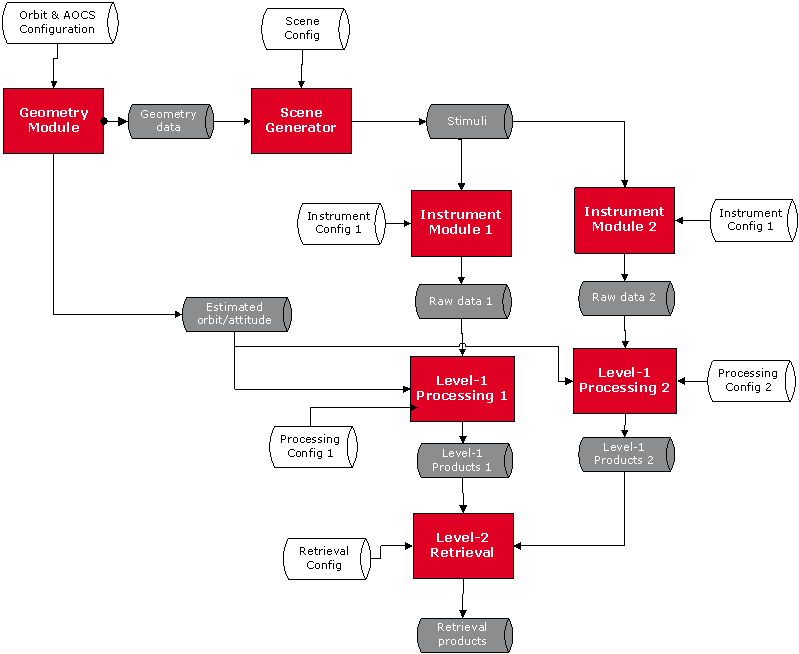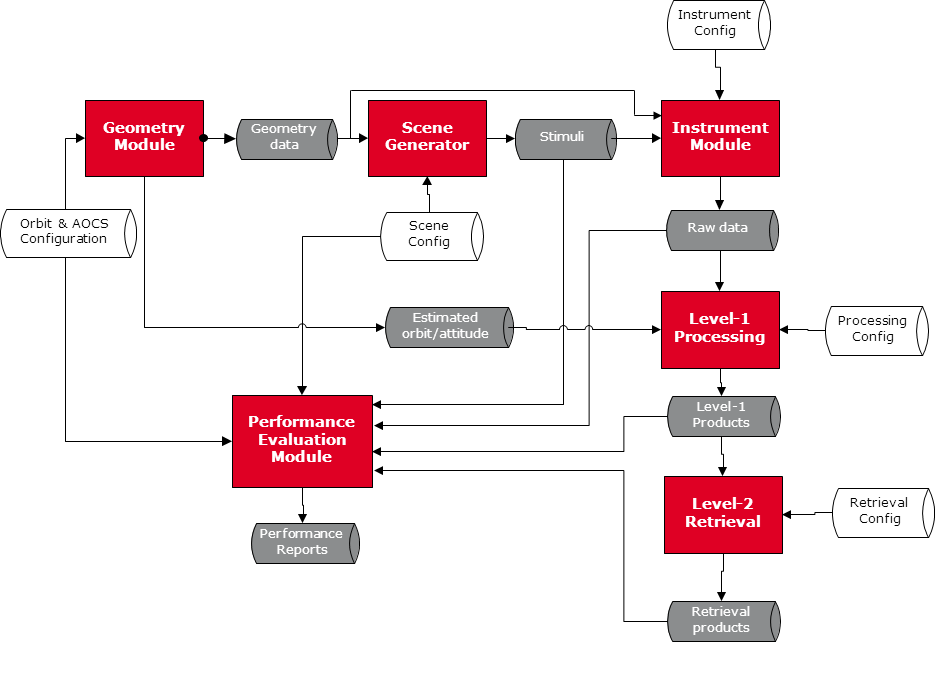The simulation chain for one instrument in one platform is called the Reference Architecture.
The simulation chain for the Reference Architecture based on the Modules is the following:
If your simulation chain includes more than one instrument, more than one platform or other specific configurations, this architecture can be easily adapted.
For example, if you have two instruments that are observing the same scene, are the same type (so the Scene Generation is common for both), and their L1 products are combined for the L2 retrieval, this is the architecture to follow:

Example architecture for a mission with single platform / multiple instruments, sharing scene generation and retrieval
If for example, if you have two instruments that are a different type (a LIDAR and a multi-band imager, or a passive microwave, etc), their simulation chain only shares the Geometry Module. In this case your architecture would be this one:

Example architecture for a mission with single platform / multiple instruments, sharing only geometry simulation
If your mission has for example 2 spacecrafts flying in formation flying, and their L1 products are combined for the L2 retrieval, you would have two parallel simulation chains that combine the L1 products in the L2 retrieval.
And so on. The power behind the BIBLOS design is that you can configure the Modules for each type of Instrument according to each mission architecture. The communication between the modules is through files, so it completely flexible.
The whole BIBLOS concept has been designed aiming at providing easy to use, modular and flexible implementations for you particular mission.

